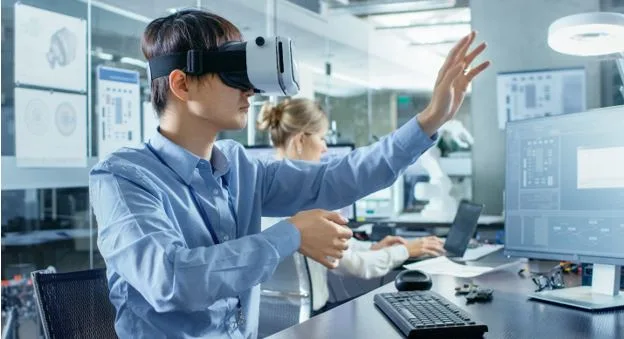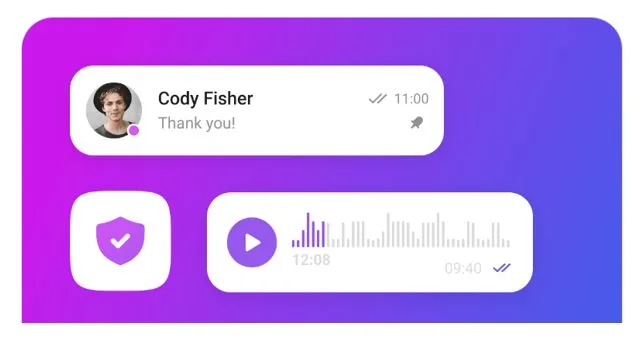What Is VR Training? Benefits, Use Cases, and Future of Immersive Learning
As digital transformation reshapes the global workplace, organizations are increasingly adopting innovative technologies to improve efficiency, enhance learning outcomes, and bridge skill gaps. Among these cutting-edge solutions, Virtual Reality (VR) training is quickly gaining traction as a powerful tool for immersive, interactive, and highly effective workforce development.
But what is VR training, and why is it revolutionizing the way we learn? This article explores everything you need to know about virtual reality training—including its definition, benefits, real-world use cases, and the promising future of immersive learning.
What Is VR Training?
VR training refers to the use of virtual reality technology to create simulated environments for educational or skill-building purposes. By immersing users in a 3D computer-generated world, VR training enables them to interact with scenarios that mimic real-life challenges—without the risks, costs, or constraints of traditional training methods.
When asking what is vr training, think of it as stepping inside a highly realistic simulation where learners can practice tasks, make decisions, and receive feedback—all within a controlled, repeatable digital environment. VR headsets, motion sensors, and hand controllers are commonly used to facilitate the experience.
Unlike passive e-learning or video-based courses, VR training is fully immersive—providing a deeper sense of presence, engagement, and retention. It is used across industries ranging from healthcare and manufacturing to aviation and customer service.
How Does VR Training Work?
VR training systems typically include:
- VR Headsets: Devices like Oculus Quest, HTC Vive, or Meta’s headsets deliver 360-degree visuals and spatial audio to immerse users in the virtual world.
- Controllers and Trackers: These enable physical interaction with the environment, such as picking up objects, performing tasks, or moving through space.
- Training Software: Custom-built VR content tailored to specific skills, procedures, or scenarios relevant to the learner’s industry.
- Analytics Dashboards: Performance data is captured during the simulation to assess competencies, mistakes, and improvement areas.
A user enters the virtual space, engages with tasks or simulations, and receives real-time feedback—leading to more experiential and memorable learning.
Benefits of VR Training
The growing interest in VR training is fueled by its wide array of advantages over conventional training techniques. Here’s a closer look at the benefits:
- Improved Knowledge Retention
Studies show that immersive learning environments can significantly boost memory retention. Because VR engages multiple senses and replicates real-life scenarios, learners are more likely to remember what they’ve learned.
- Safe Learning Environment
VR training allows learners to practice dangerous or high-risk tasks (like operating heavy machinery or handling hazardous materials) without real-world consequences. This minimizes injury and damage during the learning process.
- Hands-On Skill Development
Whether it’s surgical procedures, mechanical assembly, or customer interactions, VR gives learners a hands-on experience that improves motor skills, decision-making, and confidence.
- Scalability and Consistency
One of the most powerful benefits of VR training is its scalability. Companies can deliver uniform training programs across global teams—ensuring consistency in instruction and assessment.
- Cost Efficiency Over Time
While initial development and equipment costs can be high, VR training often proves more cost-effective over time by reducing travel, trainer fees, material usage, and on-site training logistics.
- Data-Driven Feedback and Performance Metrics
Modern VR platforms track every movement and decision a user makes, providing trainers with detailed insights into learner progress, engagement, and areas that need improvement.
Real-World Use Cases of VR Training
Now that we understand what VR training is, let’s explore how it’s being used across various industries:
- Healthcare and Medical Training
VR is used to simulate surgeries, emergency procedures, patient communication, and diagnosis. Medical professionals can practice repeatedly in a risk-free environment, leading to higher precision and better patient outcomes.
- Manufacturing and Industrial Operations
Workers can learn how to operate machinery, perform maintenance, and follow safety protocols using VR simulations. This is especially helpful in high-risk or large-scale environments where traditional training is impractical.
- Military and Defense
The military has been a pioneer in immersive training. VR helps soldiers simulate combat, tactical planning, vehicle operation, and crisis response—enhancing readiness and reducing physical training costs.
- Aviation and Aerospace
Pilots and aerospace engineers undergo complex training in simulated cockpits or maintenance bays using VR. This offers a safe way to learn without risking expensive equipment or human lives.
- Retail and Customer Service
Retailers use VR to train staff on customer engagement, store layouts, product handling, and conflict resolution. Employees gain soft skills and brand knowledge in a consistent and scalable manner.
- Education and Academia
From virtual science labs to history tours, educational institutions are using VR to create engaging, interactive experiences that improve student engagement and comprehension.
The Future of VR Training
The future of VR training is full of potential. As technology becomes more affordable and powerful, immersive learning is expected to become mainstream across all sectors. Here’s what’s on the horizon:
- Integration with AI and Machine Learning
Artificial Intelligence will enhance VR training by personalizing learning paths, analyzing performance data, and adapting simulations in real time to meet individual learner needs.
- Cloud-Based VR and Remote Access
Cloud VR platforms will allow remote learners to access training modules without bulky hardware—making immersive training more accessible than ever before.
- Mixed Reality (MR) and Augmented Reality (AR)
Future training systems will blend VR with AR and MR technologies to provide context-aware experiences. This means combining real-world surroundings with digital overlays for more comprehensive learning.
- Haptic Feedback and Wearables
Advanced haptic devices will offer tactile feedback—letting users feel textures, resistance, or force during simulations. This will enhance realism and improve muscle memory.
- Broader Adoption in Small and Medium Enterprises (SMEs)
As the cost of VR development and equipment decreases, SMEs will also begin adopting immersive learning as part of their workforce training strategies.
Challenges and Considerations
Despite its advantages, VR training comes with some challenges:
- High Initial Investment: Developing custom VR content and purchasing equipment can be expensive.
- Content Development Time: High-quality simulations require time to design and test.
- Hardware Limitations: Not all users have access to compatible VR headsets or high-speed internet.
- User Adaptability: Some individuals may face motion sickness or discomfort during VR use.
However, with rapid technological advancements and better design practices, these limitations are being addressed effectively.
Conclusion
So, what is VR training? It’s a groundbreaking approach to learning that combines immersive technology with real-world applications—transforming how individuals and organizations build skills, improve performance, and ensure safety. From boosting engagement and knowledge retention to lowering long-term costs, VR training is shaping the future of education and workforce development.
As industries continue to evolve, investing in immersive training is no longer a luxury—it’s a necessity for companies looking to stay competitive, agile, and innovative in the digital age.
Whether you’re in healthcare, manufacturing, or retail, now is the time to explore how VR training can empower your teams and elevate your operations.





